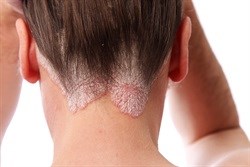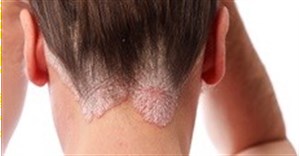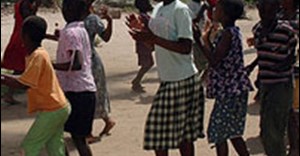
Help shed the stigma of psoriasis
The exact number of people with psoriasis is unknown, but it is estimated to affect up to about 3% of the world's population - approximately 1-2 million people in South Africa. All ages may be affected, but it most commonly begins in the teenage and early adult years, before the age of 40.

© Farina3000 - Fotolia.com
Thereafter, it tends to remain throughout life, although there may be periods of improvement, or even remission, followed by recurrences. There is a strong genetic link to psoriasis. It occurs more commonly in people whose parents or siblings are affected. Almost three quarters of children with psoriasis have other members in their family with the condition and the risk is doubled if a sibling and one parent have psoriasis.
Sister Judy Wallace is in charge of the dermatology ward at Groote Schuur hospital in Cape Town and is Chairperson of the South African Psoriasis Association. She expresses frustration about the general lack of awareness and understanding of psoriasis. "There is much stigma attached to psoriasis. There is a misconception that it is contagious, which is false and it has nothing to do with bad hygiene. Nevertheless, this can lead to people with psoriasis isolating themselves and even having difficulty finding or keeping employment.
"Some of our patients have never been to the beach, not because they cannot go, but because they are too ashamed to go. They just want people to stop staring at them. This skin disease has a terrible impact on people's quality of life. Moreover, the sad thing is that it can be very successfully treated if it is properly diagnosed but many people either do not seek treatment or, if they do, do not always get an appropriate treatment."
Causes and symptoms
It is not known what causes psoriasis. However, studies show that immune cells in the skin behave abnormally, causing skin cells, blood vessels and nerves to grow faster than usual. Most commonly, in around 90% of people with psoriasis, this results in clearly demarcated patches or 'plaques' of thick, red skin, covered with white or silver scales (called psoriasis vulgaris). These normally occur on both sides of the body over the back of the elbows, front of the knees, on the lower back and around the umbilicus. Approximately half of people with psoriasis also have involvement of the scalp or nails. The skin lesions can be very uncomfortable, causing itching, burning, bleeding and pain from irritated skin. In addition to this, messy flaking and the unsightly cosmetic appearance of the skin and nails can be a source of acute embarrassment, self-consciousness and frustration.
Early diagnosis
An early diagnosis is essential. Dr Moolla, a dermatologist in private practice the Western Cape, says there is a growing trend for people with skin diseases to self-diagnose, using the internet. "This is dangerous, because it means that frequently they get neither the correct diagnosis, nor the correct treatment. An untrained person can easily confuse psoriasis with other common skin conditions, and especially with eczema, which requires different types of treatment. You need to be properly assessed by a qualified healthcare worker."
Although there is no cure for psoriasis, symptoms can be controlled with treatment. Apart from managing the skin and improving psychological well-being, early diagnosis helps to identify people at risk of associated conditions and arthritis, where early recognition can reduce the chance of worsening health problems, joint damage and disability.
Related health problems
Up to 1 in 4 people with psoriasis develop an associated arthritis that is characterised by joint pain, early morning stiffness and painful inflammation of the fingers or toes. This 'psoriatic arthritis' is progressive and, if left untreated, ultimately results in deformity. People with psoriasis are also at increased risk of a number of other health problems, including diabetes, high blood pressure, high cholesterol, obesity, heart attack, inflammatory bowel disease, and certain types of cancer.
Depression and anxiety are also common and patients express a range of emotional reactions, including shame, embarrassment, and anger and helplessness. "The mental health issues that affect people with psoriasis are grossly underestimated," says Wallace. "It sets up a vicious cycle, where the anxiety and psychological distress precipitate flare-ups and worsening psoriasis." Therefore, the effects of psoriasis are far-reaching, affecting almost every aspect of the patient's quality of life, including physical activities, psychological, social, sexual and occupational well-being.
Treatments
For mild to moderate psoriasis, especially where it affects relatively small areas of the skin, topical creams and ointments are sufficient to control the disease. Where topical treatments fail or the lesions are too widely distributed for topical application, alternative options include ultraviolet therapy and oral or injectable therapies that help to reduce the abnormal activity of the immune system.
"Topical treatments are extremely effective in many patients, and spare them from the side effects that can occur with oral medications," continues Wallace. They include corticosteroids, vitamin D-based treatments, coal tar preparations and preparations to soften the skin or reduce abnormal growth of cells.
As psoriasis is a chronic disease, it requires lifelong treatment. Furthermore, it is important to keep the skin well moisturised and the patient well hydrated. Treatments should be used regularly, as prescribed to help prevent flare-ups. "Avoidance of too much sun exposure, sunburn, excessive drinking and smoking can also help to control the disease," says Moolla.
Support groups
Both Moolla and Wallace recommend that people with psoriasis should join a psoriasis support group through organisations such as the SA Psoriasis Association (www.psoriasis.org.za). "Joining a community that understands and shares experiences with people in the same boat is one of the best ways of managing the disease. Likewise, the World Psoriasis Day website (www.worldpsoriasisday.com) is a valuable source of information, globally raising significant awareness of the disease," concludes Moolla.
| Comparison between atopic eczema and psoriasis | ||
|---|---|---|
| Eczema (atopic eczema; dermatitis) | Psoriasis | |
| Age group | Most common in childhood (up to 1 in 5 children; 2%-10% of adults) | Most common in adults (up to 3% of the population) |
| Peak age | Under 2 years, becomes less common with increasing age | May occur at any age, but usually begins in teens or before the age of 40. |
| Course | Usually resolves during childhood, but may persist into adult life, or recur in teenage or early adult years | May be improvements followed by relapses, but tends to persist throughout life |
| Cause | Skin may be susceptible to allergy | The immune system is dysfunctional |
| Genetic cause | Yes, it may run in families | Yes, runs in families |
| Environmental triggers | Yes, it may be an allergy to irritants, such as wool, chemicals, tobacco smoke, traffic exhaust; certain foods; or a bacterial skin infection | Yes, worsening may be triggered by change in climate, injury to the skin, chemicals, detergents, or stress |
| Itching | Yes | May be itching, burning or painful |
| Skin appearance | Dry skin, redness, blistering, oozing, cracking, scaling, skin thickening and sometimes colour change (depends on severity and not all occur together) | Sharply demarcated inflamed plaques covered by silvery white scales |
| Common sites | Skin creases: front of elbows, behind knees, fronts of ankles, around neck, around eyes, cheeks, forehead | Elbows, front of knees, scalp, umbilicus, lower back |
| Associated conditions | Other allergies; e.g., asthma, allergic rhinitis (hay fever), eye allergies, allergy to food | Arthritis; increased risk for heart attack, diabetes, inflammatory bowel disease, depression |
| Contagious | No | No |









